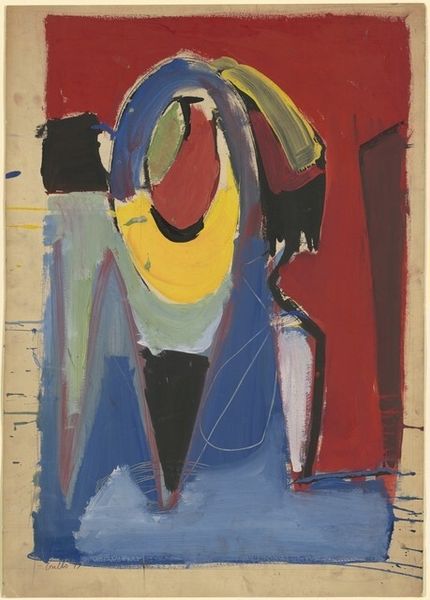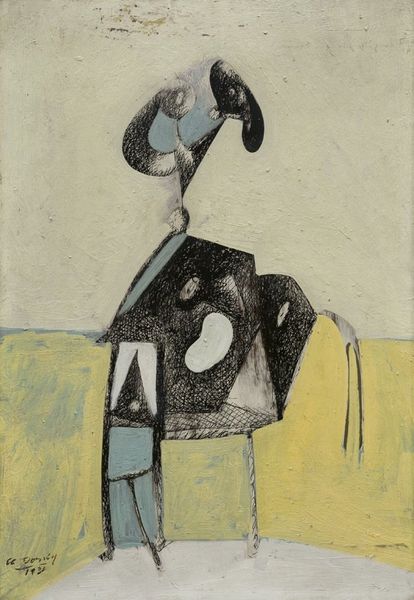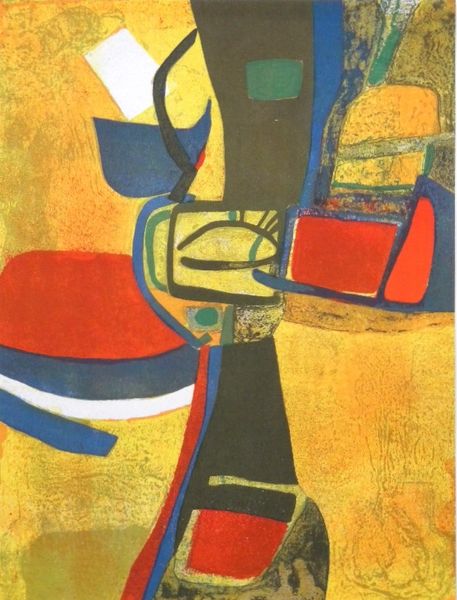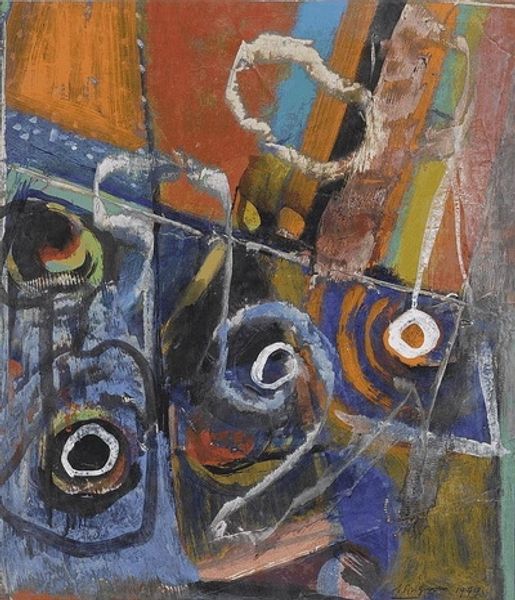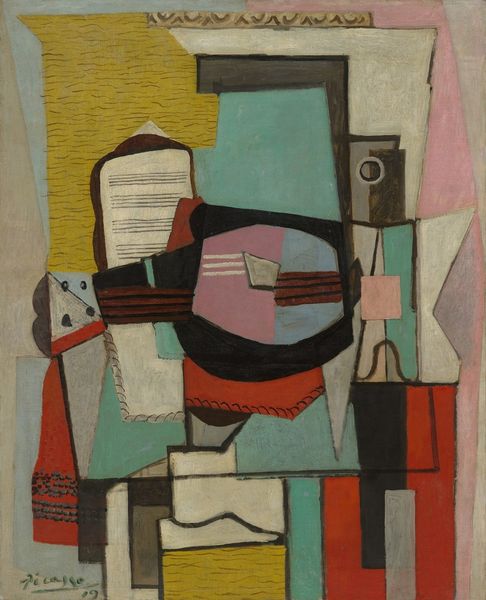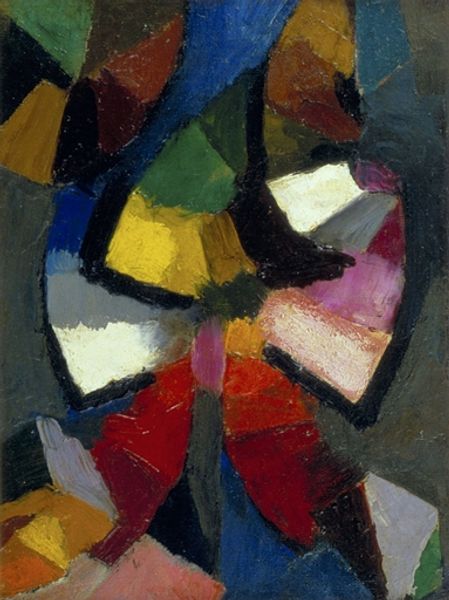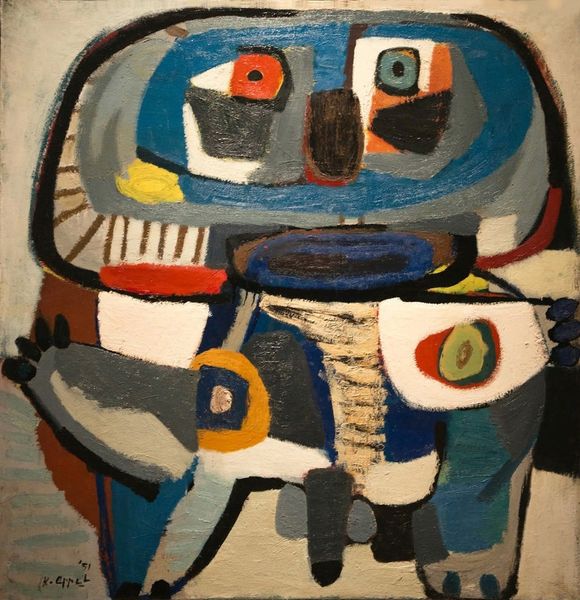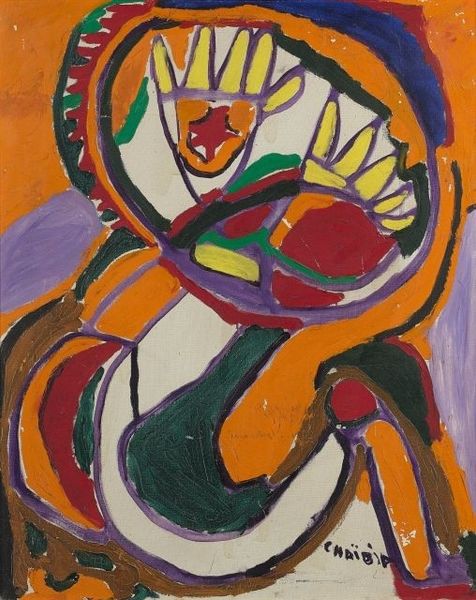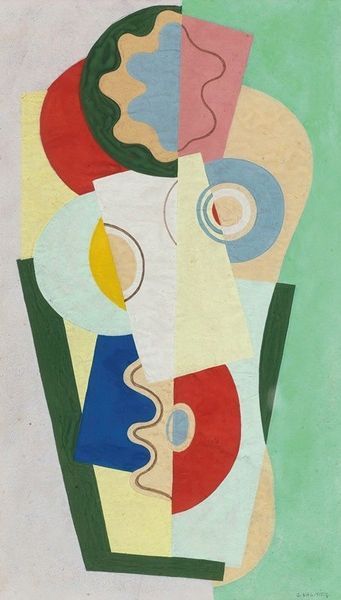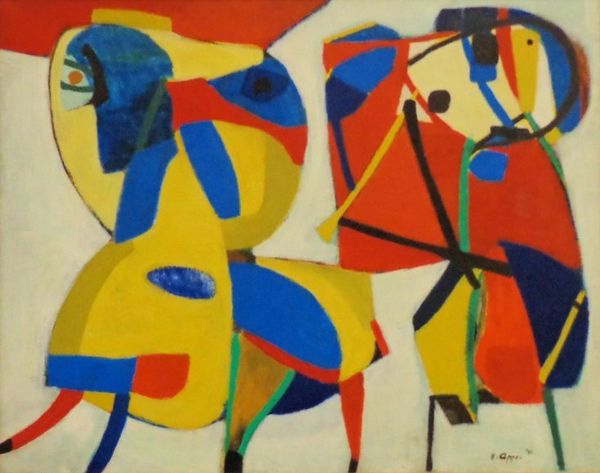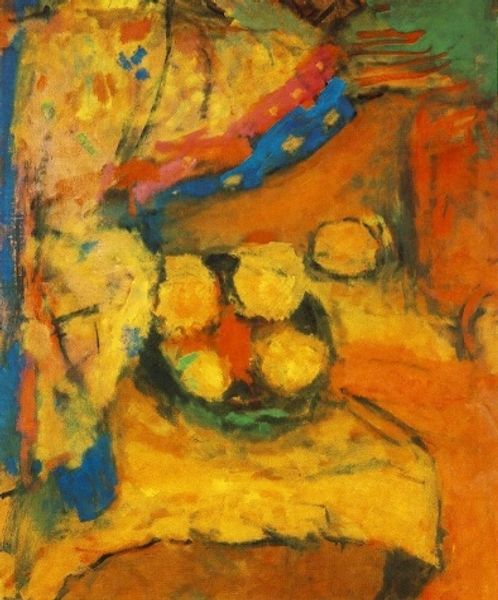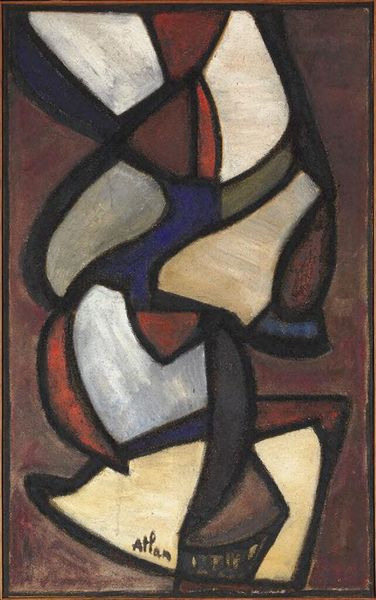
acrylic-paint, impasto
#
abstract-expressionism
#
acrylic
#
cobra
#
acrylic-paint
#
figuration
#
form
#
impasto
#
geometric
#
modernism
Copyright: Karel Appel,Fair Use
Curator: Karel Appel's "1951" is a striking example of abstract expressionism rendered in acrylic paint. The impasto technique gives it a tangible texture. Editor: My first impression is of raw energy. The composition feels almost chaotic, but somehow contained. What sort of symbolic vocabulary are we dealing with here? Curator: Appel was a key figure in the CoBrA group. This piece demonstrates their commitment to spontaneous creation. He employed bold color choices to, in effect, attack the canvas. One must consider the acrylic paint and impasto here--very tactile for that postwar art movement. Editor: Absolutely. The aggressive application serves a deeper purpose, I think. Those forms remind me of children's drawings, distorted memories, primal forms re-emerging. The single blue circle is rather unsettling in what seems to be the figure's face, though--what do you see in the symbolic nature? Curator: Appel would argue against conscious symbolism, however his choices reveal subconscious or spontaneous motivations. Think of post-war Europe and the rejection of traditional norms, embracing pure expression by using affordable, synthetic paints available at the time. "1951" is a document of process as much as image, an engagement with the physicality of making. Editor: The physicality evokes primitive art; I see vestiges of the past seeking expression after unimaginable trauma. Geometric shapes suggesting shattered structures or even fractured identities are at play here. Curator: Post-war context absolutely influenced material access. Appel seized inexpensive, fast-drying paint. Impasto contributes significantly to this, literally building up layers in frenzied marks as part of this expressive means. Editor: So in considering his method and intention...the emotional residue carried within such potent shapes--do we interpret that or leave space for the work's symbolism to breathe, too? Curator: It shows us how raw materiality intertwined with social conditions of post war europe; the painting is evidence of available, synthetic pigments utilized in dynamic construction Editor: "1951" has definitely ignited my thinking about art and society at large with enduring relevance.
Comments
No comments
Be the first to comment and join the conversation on the ultimate creative platform.
